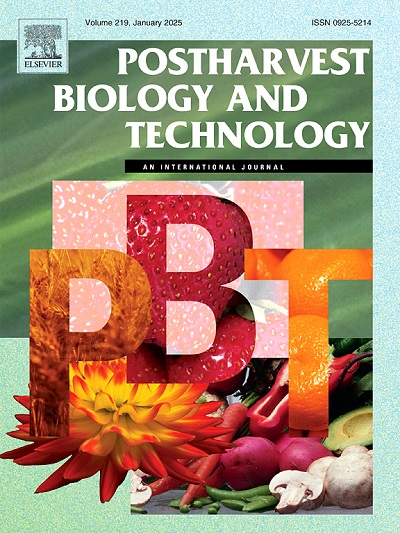De novo transcriptome assembly and analysis unveil molecular insights into Cladosporidium rot development in harvested table grapes
IF 6.8
1区 农林科学
Q1 AGRONOMY
引用次数: 0
Abstract
Cladosporium cladosporioides is a fungal pathogen that affects various crops worldwide, including table grapes, where it causes Cladosporium rot. The molecular episodes of Cladosporium rot development are still unclear and need to be explored. More detailed knowledge of the molecular mechanisms underlying Cladosporium rot will provide upcoming developments on disease resistance and management. Here, we report RNA sequencing and transcriptomic analysis of C. cladosporioides infecting postharvest table grapes and its relationship with the grape’s defense response. High-throughput sequencing of cDNA libraries following de novo transcriptome assembly produced 70 thousand transcripts. This study is the first attempt to explore the transcriptional level changes of the fungus during Cladosporium rot development in table grapes. Our study showed that the fungus expresses huge sets of pathogenicity-related genes and families of genes encoding CAZymes, transcription factors and secretory proteins. Further, we identified genes of this fungus that facilitate nutrient uptake, metabolism and growth in grapes, which were significantly upregulated. This study provides valuable insights into the complex pathogenic mechanisms of C. cladosporioides, in which the fungi alter its transcriptome and develop adaptations to overcome the grape’s defenses and colonize table grape tissue.
从头转录组组装和分析揭示了在收获的鲜食葡萄枝孢子虫腐烂发育的分子见解
枝孢霉(Cladosporium cladosporioides)是一种真菌病原体,影响世界各地的各种作物,包括鲜食葡萄,在那里它引起枝孢霉腐病。枝孢霉腐病发展的分子情节尚不清楚,需要探索。更详细地了解枝孢霉腐病的分子机制将为今后的抗病和管理提供帮助。在这里,我们报道了枝孢子虫感染采后鲜食葡萄的RNA测序和转录组学分析,以及它与葡萄防御反应的关系。从头转录组组装后的高通量cDNA文库测序产生了7万个转录本。本研究首次探讨了食葡萄枝孢霉腐病发生过程中真菌转录水平的变化。我们的研究表明,该真菌表达了大量的致病性相关基因和编码CAZymes、转录因子和分泌蛋白的基因家族。此外,我们还发现了这种真菌促进葡萄营养吸收、代谢和生长的基因,这些基因显著上调。这项研究为枝孢霉复杂的致病机制提供了有价值的见解,其中真菌改变其转录组并发展适应以克服葡萄的防御并定植食葡萄组织。
本文章由计算机程序翻译,如有差异,请以英文原文为准。
求助全文
约1分钟内获得全文
求助全文
来源期刊

Postharvest Biology and Technology
农林科学-农艺学
CiteScore
12.00
自引率
11.40%
发文量
309
审稿时长
38 days
期刊介绍:
The journal is devoted exclusively to the publication of original papers, review articles and frontiers articles on biological and technological postharvest research. This includes the areas of postharvest storage, treatments and underpinning mechanisms, quality evaluation, packaging, handling and distribution of fresh horticultural crops including fruit, vegetables, flowers and nuts, but excluding grains, seeds and forages.
Papers reporting novel insights from fundamental and interdisciplinary research will be particularly encouraged. These disciplines include systems biology, bioinformatics, entomology, plant physiology, plant pathology, (bio)chemistry, engineering, modelling, and technologies for nondestructive testing.
Manuscripts on fresh food crops that will be further processed after postharvest storage, or on food processes beyond refrigeration, packaging and minimal processing will not be considered.
 求助内容:
求助内容: 应助结果提醒方式:
应助结果提醒方式:


